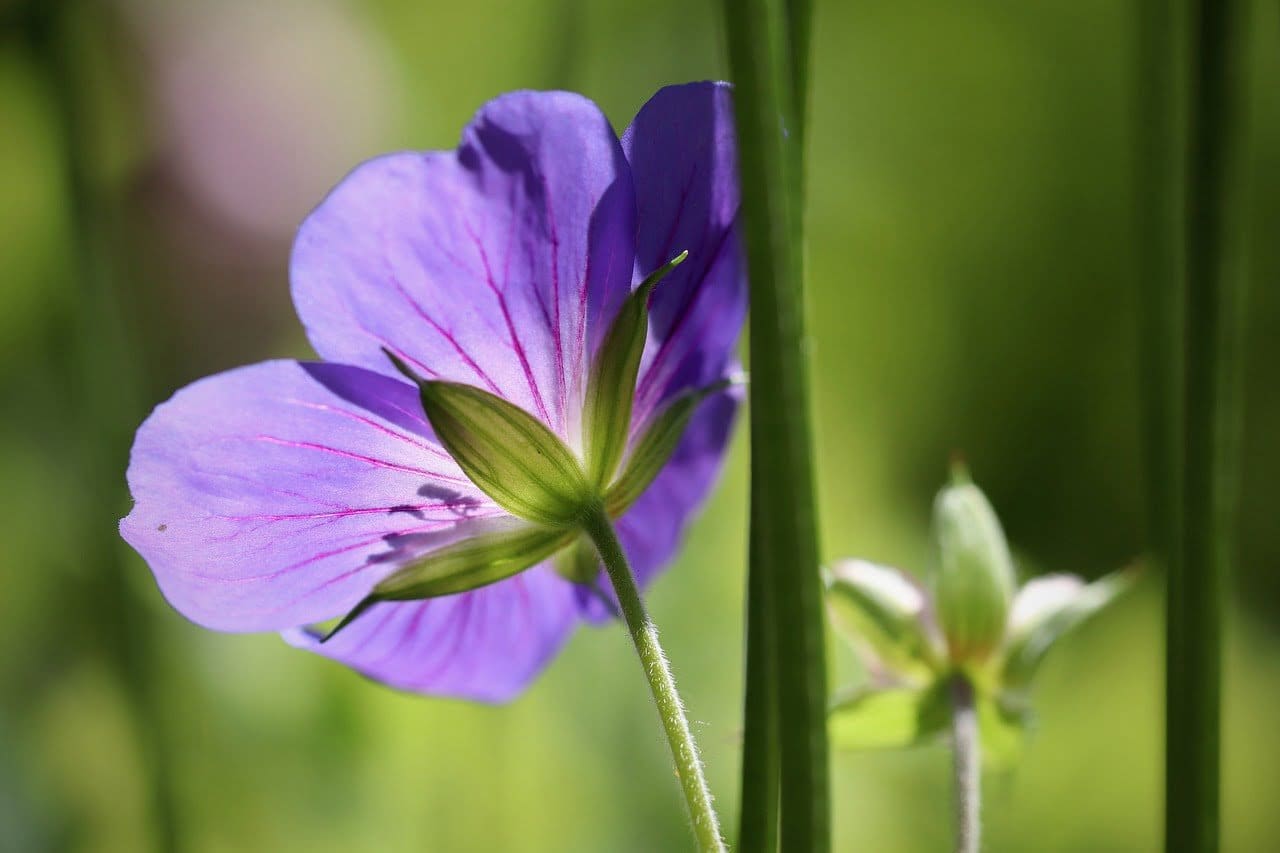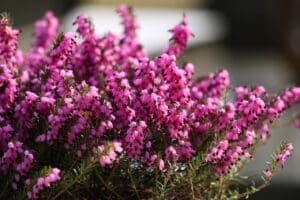Hardy geraniums, also known as cranesbills, are some of the most popular flowering perennials for gardens. With their attractive, saucer-shaped blooms in shades of pink, purple, red and white, these hardy plants bring long-lasting color to borders, rock gardens, and containers.
Growing hardy geraniums (cranesbill) is easy and rewarding. By choosing the right variety, providing optimal growing conditions, and following proper care and maintenance practices, you’ll be rewarded with vibrant, long-blooming plants.
This guide covers everything you need to successfully grow hardy geraniums (cranesbill), from variety selection to deadheading and disease prevention. Follow these tips for stunning hardy geraniums (cranesbill) that will thrive season after season.
You might also be interested in: Perennials for Wild Gardens
Choosing the Right Hardy Geranium (Cranesbill) Variety
With over 300 species and cultivars, there’s a hardy geranium (cranesbill) to suit any garden setting. Consider the following when selecting varieties:
Growth Habit
- Spreading varieties like ‘Biokovo’ and ‘Rozanne’ work well in borders and rock gardens.
- Mounding types like ‘Nimbus’ and ‘Red Admiral’ are ideal for containers.
- Compact selections like ‘Azure Rush’ are perfect for edging paths.
Flower Colour
- ‘Johnson’s Blue’ has unique blue-purple blooms.
- ‘Rozanne’ offers large violet-blue flowers.
- ‘Max Frei’ bears bright magenta-pink blooms.
- ‘Salome’ features pristine white flowers.
Growing Conditions
- Check light and soil requirements to choose varieties suited to your garden’s environment.
- Most prefer partial shade in average, well-drained soil.
Selecting site-appropriate hardy geranium (cranesbill) varieties will ensure vigorous growth and maximum flowering.
Site Selection and Soil Preparation
When preparing to plant hardy geraniums (cranesbill), choose a site that provides:
- Partial sun to light shade exposure. Most tolerate full sun in cooler climates.
- Fertile, well-draining soil – enrich with compost if needed.
- Adequate airflow and space for mature plant width.
- Protection from hot afternoon sun in warmer zones.
Amend heavy or dense soil with organic matter like compost. This improves drainage and nutrient levels for better growth.
Test the soil pH and adjust if needed. Hardy geraniums (cranesbill) prefer a neutral to slightly alkaline pH of 6.5-7.5. Lime can be worked into acidic soils to raise the pH level.
Planting Hardy Geraniums (Cranesbill)
Hardy geraniums (cranesbill) can be planted in spring once the danger of frost has passed. Fall planting is also suitable in mild winter zones.
Follow these tips when planting:
- Dig holes twice as wide and deep as the root ball. Space 12-18 inches apart.
- Loosen tangled or circling roots before placing the plant in the hole. Position the crown just above the soil line.
- Backfill with native soil and pack firmly to remove air pockets. Water thoroughly after planting.
- Apply a 2-4 inch layer of mulch around plants to conserve moisture and suppress weeds. Avoid piling mulch against stems.
- Provide supplemental water during the first summer if rainfall is inadequate. New plants need consistent moisture to establish.
With proper planting and post-care, hardy geraniums (cranesbill) will flourish in your garden for years to come.
Ongoing Hardy Geranium (Cranesbill) Care
Hardy geranium (cranesbill) care consists of regular watering, fertilizing, and pruning. Monitor your plants and adapt care to their needs.
Watering
- Provide 1-2 inches of water per week from spring to fall, adjusting for rainfall.
- Water deeply and infrequently to encourage deep root growth.
- Reduce watering in fall and winter, allowing soil to partially dry out between waterings.
- Avoid overwatering, which can lead to root rot in these drought-tolerant plants.
Fertilizing
- Apply a balanced, slow-release fertilizer in spring when new growth appears.
- Liquid fertilizer can be used every 4-6 weeks during the growing season if plants need a nutrient boost.
- Discontinue fertilizer after September so plants harden off for winter dormancy.
Pruning
- Remove spent flower stems down to a healthy leaf node to encourage reblooming.
- Cut back leggy growth in spring to shape plants and improve density.
- Divide overgrown clumps every 2-3 years in early spring. Replant divisions 12-18 inches apart.
Regular maintenance keeps hardy geraniums (cranesbill) looking their best and producing abundant flowers.
Deadheading and Pruning Hardy Geraniums (Cranesbill)
One of the keys to maximizing hardy geranium (cranesbill) blooms is staying on top of deadheading and pruning.
Deadheading
- Use scissors or pruning shears to remove spent flower stems back to a healthy leaf node.
- Deadhead hardy geraniums (cranesbill) regularly during the flowering period from late spring to early fall.
- Cutting off faded blooms redirects the plant’s energy into producing new flowers.
Pruning
- In spring, cut back any leggy or damaged growth to just above a healthy leaf node.
- Pruning encourages plants to branch out, improving air circulation and promoting flowering.
- Shape and thin crowded plants every 1-3 years to rejuvenate growth. Avoid shearing.
- Discard pruned stems and leaves to prevent the spread of pests or disease.
Consistent deadheading and pruning keeps hardy geraniums (cranesbill) tidy, vibrant and floriferous for the whole season.
Common Pests and Diseases
Hardy geraniums (cranesbill) are relatively trouble-free, but may be affected by certain pests and diseases. Identifying issues early allows for prompt treatment.
Pests
- Aphids – Control with horticultural oil or insecticidal soap sprays. Ladybugs also prey on aphids.
- Slugs and snails – Remove by hand or trap using boards or beer. Avoid chemical baits that harm pollinators.
- Spider mites – Knock off with a strong spray of water. Apply neem oil if infestations persist.
Diseases
- Powdery mildew – Prevent by avoiding wet foliage and providing good air circulation. Treat with neem oil or a fungicide.
- Botrytis blight – Pick off and discard affected leaves and blooms. Improve airflow and avoid overhead watering.
- Leaf spots – Remove and destroy affected foliage. Apply a fungicide at the first sign of infection.
Good cultural practices like clean-up of foliage and proper plant spacing keeps issues to a minimum.
FAQs – Growing Hardy Geraniums (Cranesbill)
Q. How do I propagate hardy geraniums (cranesbill)?
Take 3-4 inch stem cuttings in spring or summer. Remove the lower leaves and place the cuttings in potting mix. Keep the soil consistently moist until roots form in 2-3 weeks. Hormone rooting powder can accelerate rooting.
Q. Should I cut back hardy geraniums (cranesbill) for winter?
In mild zones, plants can be left in place over winter. In colder climates, cut back dead growth after a hard frost but leave 2-3 inches of stem. Mulch plants to protect the crown.
Q. Why are my hardy geranium (cranesbill) leaves turning yellow?
This is usually caused by overwatering or poor drainage. Allow soil to dry between waterings and amend soil to improve drainage if needed. Remove any diseased foliage promptly.
Q. How can I get my hardy geranium (cranesbill) to bloom more?
Provide at least 4-6 hours of sun daily. Deadhead spent flowers regularly to promote new blooms. Apply a balanced fertilizer every 4-6 weeks during the growing season.
Conclusion
With their long flowering period and versatile growth habits, it’s easy to see why hardy geraniums (cranesbill) are treasured garden plants. By selecting suitable varieties, providing optimal growing conditions, and practicing proper care, you can enjoy healthy, floriferous hardy geraniums (cranesbill).
Deadheading, pruning, and pest prevention will keep your plants looking their best from spring through fall. Don’t be afraid to cut plants back hard in spring if they become leggy and sparse. With the right care, hardy geraniums (cranesbill) will thrive for years, rewarding you with their colourful blooms.







